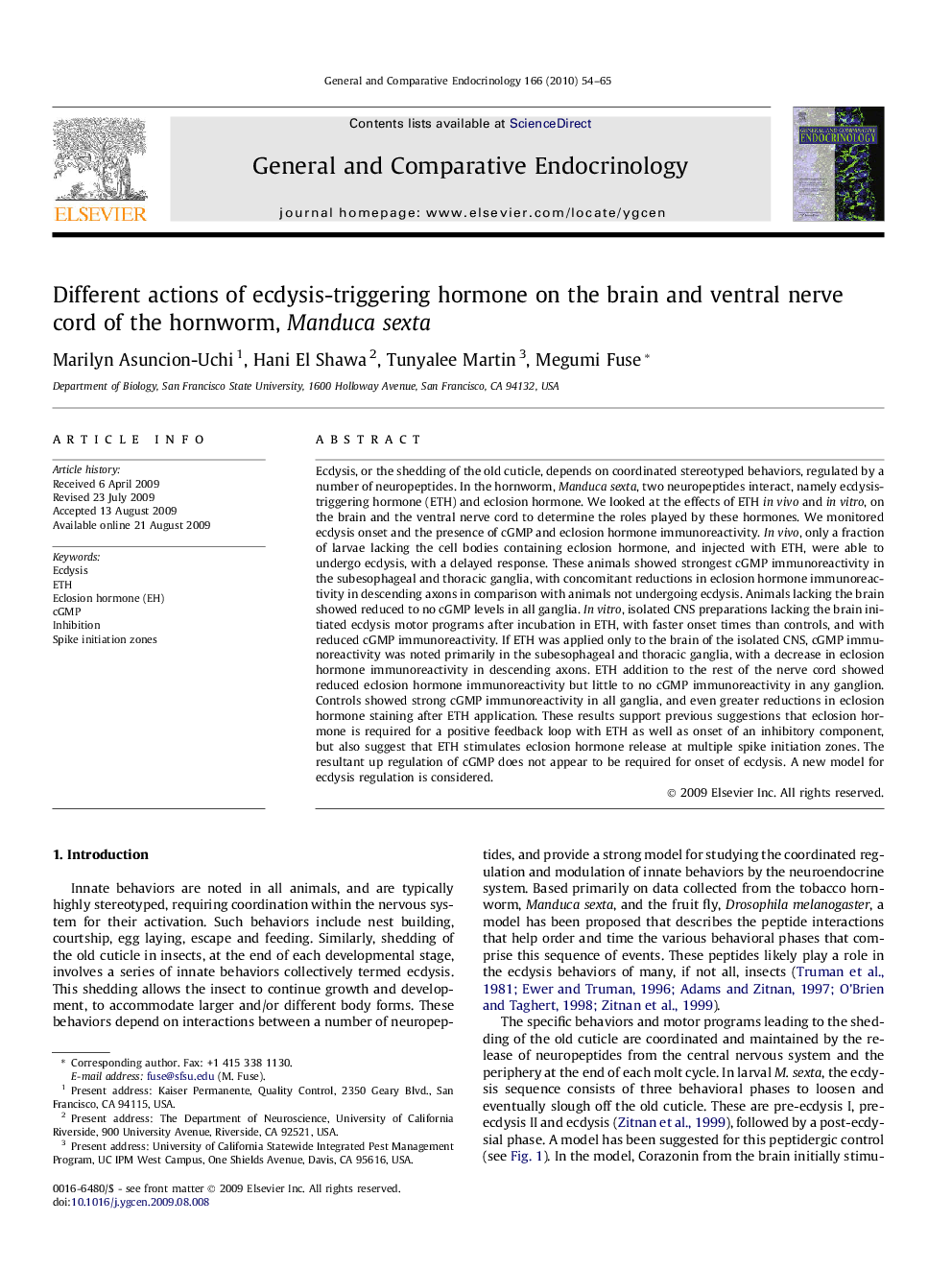| Article ID | Journal | Published Year | Pages | File Type |
|---|---|---|---|---|
| 2801365 | General and Comparative Endocrinology | 2010 | 12 Pages |
Ecdysis, or the shedding of the old cuticle, depends on coordinated stereotyped behaviors, regulated by a number of neuropeptides. In the hornworm, Manduca sexta, two neuropeptides interact, namely ecdysis-triggering hormone (ETH) and eclosion hormone. We looked at the effects of ETH in vivo and in vitro, on the brain and the ventral nerve cord to determine the roles played by these hormones. We monitored ecdysis onset and the presence of cGMP and eclosion hormone immunoreactivity. In vivo, only a fraction of larvae lacking the cell bodies containing eclosion hormone, and injected with ETH, were able to undergo ecdysis, with a delayed response. These animals showed strongest cGMP immunoreactivity in the subesophageal and thoracic ganglia, with concomitant reductions in eclosion hormone immunoreactivity in descending axons in comparison with animals not undergoing ecdysis. Animals lacking the brain showed reduced to no cGMP levels in all ganglia. In vitro, isolated CNS preparations lacking the brain initiated ecdysis motor programs after incubation in ETH, with faster onset times than controls, and with reduced cGMP immunoreactivity. If ETH was applied only to the brain of the isolated CNS, cGMP immunoreactivity was noted primarily in the subesophageal and thoracic ganglia, with a decrease in eclosion hormone immunoreactivity in descending axons. ETH addition to the rest of the nerve cord showed reduced eclosion hormone immunoreactivity but little to no cGMP immunoreactivity in any ganglion. Controls showed strong cGMP immunoreactivity in all ganglia, and even greater reductions in eclosion hormone staining after ETH application. These results support previous suggestions that eclosion hormone is required for a positive feedback loop with ETH as well as onset of an inhibitory component, but also suggest that ETH stimulates eclosion hormone release at multiple spike initiation zones. The resultant up regulation of cGMP does not appear to be required for onset of ecdysis. A new model for ecdysis regulation is considered.
